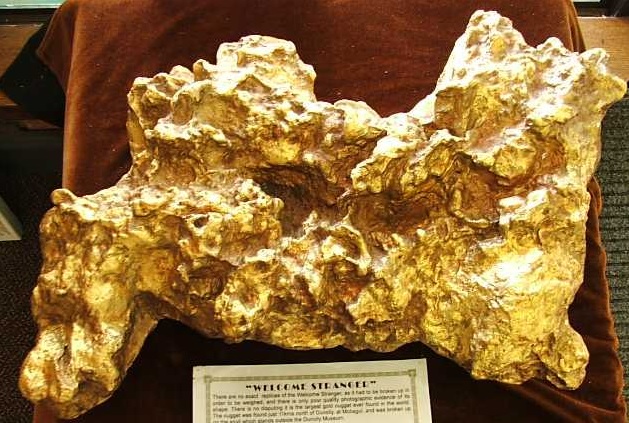Searching for sold as you may have witnessed in TV Shows like The Gold Rush, wherein hosts get overly excited for even getting ounces after prolonged search here and there, is nothing put in comparison with the gold rush in 19th century Victoria Australia.
It is not common knowledge that at least 10% of all the world’s gold accumulated from the soil has in some shape and form come from the continent of Australia.


Welcome Stranger and the Canaa nugget enjoy the status of world’s largest gold nuggets, at least in the literature.
John Deason and Richard Oates discovered the Welcome Stranger in Moliagul, Victoria in 1869 and it is widely considered by the historians and authorities to be the biggest gold nugget ever found in the world. Literature often confuses Welcome Stranger with a similarly named gold piece Welcome Nugget which was discovered by Red Hill Mining Company in June 1858 near Bakery Hill, Ballarat, Australia.
Welcome Nugget originally weighed the upward of 2,218 troy ounces, or just over 152 lb, only to be melted down in Nov 1859 in London.
Another significantly large nugget, known as The Canaa nugget or Pepita Canaa, was discovered from the Pelada Mine in the Para state of Brazil in 1983.
The nugget weighs 134 lb and is considered among the largest gold nuggets ever discovered, and currently the largest in existence.
The Pepita Canaa is surrounded by a controversy that suggests that the original nugget discovered at the Pelada Mine was in fact 331 lb in weight, but during the excavation process it broke in nearly half its original size, and that is the piece which we now call the Canaa nugget.
The Pepita now sits on display at the Banco Central Museum in Brazil; accompanied by other some of the largest nuggets in existence now weighing 94 lb, and 87lb.
Australian miners hold another record of discovering the largest gold nugget using a metal detector.
This gold nugget called the Hand of Faith weighs 875 troy ounces, or a whopping 27.2 kilograms (60 lb), and was discovered in Kingower, Victoria, in 1980.
The gold rush that took Victoria, Australia, in the 1850’s produced some of the largest nuggets ever discovered anywhere in the world.
Another in the long list is Lady Hotham, which weighs 98.5 pounds and was found a team of nine miners in September 1854 in Ballarat at a depth of 135 feet.
The Lady Hotham was named such because the wife of Governor, Sir Charles Hotham, was visiting the area on the day of the discovery.
A year and a half earlier, in the January of 1853, a set of three large nuggets weighing 134 pounds, 93 pounds and 83.5 pounds were also discovered from the same site at a depth of approximately 60 feet.
The gold nuggets around the world weigh between 20K to 22K, which translates as between 83% and 93% in purity.
However, in Australia, the gold nuggets often score 23K or a bit higher on the purity scale, nuggets found in Alaska score a bit lower on the spectrum.
The colour of the nugget is often a good indicator of the level of its purity; a deeper and richer yellowish orange colour means high gold content; copper is the common impurity in these nuggets.

